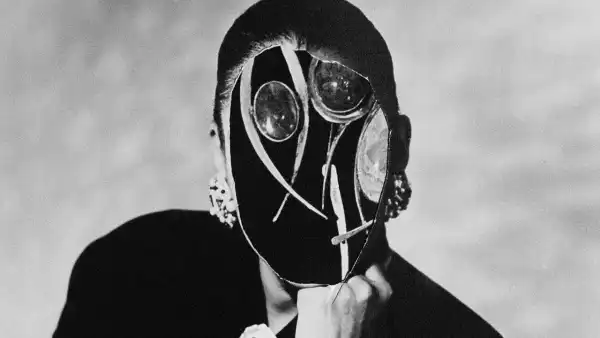
The ultra-rare film “Qui Trop Embrasse,” by Jacques Davila, from 1986, which played at the Quad Cinema on Saturday night and returns for a second screening on Tuesday, is exactly the kind of rediscovery for which repertory houses exist. It has never been released in the United States, and it’s a pathbreaking film—one that expands, even at three decades’ remove, the possibilities of naturalistic drama in ways that very few filmmakers have attempted.
“Qui Trop Embrasse,” whose title literally means “Who kisses too much,” is a pun based on a French proverb that cautions against overreaching, and in both senses it’s apt for the movie’s tone of breathlessly intimate striving. Davila’s film is a dramatic yet whimsical romantic roundelay in which a young man, Christian (Michel Gautier), discovers that his partner, Françoise (Tonie Marshall), has another lover. He pours his heart out to his colleague at the information desk of the Pompidou Center, Nathalie (Anne Wiazemsky), whose partner, Marc (Andrzej Seweryn), proves to be as cold and unyielding as Françoise’s new partner, Jean-François (Christian Cloarec). Meanwhile, Christian has returned home to the apartment of his mother, whose own anguished and rhapsodic reminiscences of her love life stand in sharp contrast to the uncommitted pawings and hemmings and hawings that mark the romances of Christian’s generation.
“Qui Trop Embrasse” (playing in a series of Wiazemsky’s films) has the tone and the spirit of romantic comedy, with moments of exaggerated performance and hyperbolic or trivial actions that are nonetheless infused with the confessional intensity of a chamber drama. The characters, in their thirties, even pressing forty, carry a growing weight of romantic memories—their recollections of people whom they loved and lost (or left) surge forth during intimate times with new lovers. Even their brazen sexual frankness, their physical freedom and the lack of inhibition with which they express and discuss it, bears the mark and elicits memories of earlier lovers. (There’s no nudity in “Qui Trop Embrasse,” but plenty of erotic talk that’s matched by allusive under-the-covers action, and that erotic talk is one of the film’s more original touches.)
Davila (who wrote the script with Gautier) catches extremes that follow one another joltingly: sudden outbursts of violence (a man pushes a woman, a woman slaps a man); long stretches of odd work-related back-and-forths and peculiar doings behind the desk that are punctuated by the intimacies of a growing friendship; brilliantly composed domestic images in which mirrors both fracture and amplify the psychological pressures of intimate life, the tensions of couples in a tiny city apartment, the explicit intersections of love and money. “Qui Trop Embrasse” isn’t a consistent masterwork throughout—some of its scenes stay at the anecdotal level, some of the twists seem thinly motivated or haphazard. But it rises to an extraordinary pitch of invention in a trio of scenes that build vast architectures of imagination from uneasy situations, starting with Christian’s sudden return to his mother’s apartment.
She’s played by Micheline Presle, a grande dame of the French cinema (with a Hollywood career behind her, too), as a commercial artist. When Christian, sitting at a sewing machine and shortening a coat, asks about her two husbands (one of whom was his father), she calmly uncorks confessions about her romantic past thathave a torrential, novelistic amplitude. Then there’s a scene in which the lonely Françoise brings back to her apartment a man who turns out to be a prostitute, whose working life and conditions (and whose understanding with Françoise) Davila presents earnestly, analytically, and empathetically. There’s also one of the most brilliant concluding scenes I’ve seen in a while, a fantasy representation of a grim event that yields, at the last moment, to its painful practicalities, that’s handled so gracefully and tenderly that it sheds all absurdity and rises to sublime tragicomic heights. With “Qui Trop Embrasse,” Davila (who died in 1991, and made only three features during his lifetime) expands the modes and tones of intimate realism to an extent that few directors have attempted or, I suspect, even imagined.
Only about a dozen viewers were on hand at the screening on Saturday night—but two of them are among the best young independent filmmakers. In this regard, the pair of screenings at the Quad tell another story: a story of absences, of holes in the historical consciousness of American directors that were left by an appalling stretch, in the nineteen-eighties and, above all, nineties, when the distribution of foreign films—and, for that matter, of American independent films—declined precipitously.
Many factors converged during that period, to unfortunate effect. The rise of home video—of VHS tapes—kept viewers home or satisfied their appetites for foreign films (even if not the same ones). The illusion of Hollywood going indie with Quentin Tarantino and others made mass-marketed cinema seem hip and thrust authentic originality even deeper into the less-commercial shadows. It became more expensive to distribute foreign films at the very moment when returns were imperilled; theatres closed and their successors (the work of the past two decades) hadn’t yet arisen. Perhaps above all, criticism was petrified (maybe in both senses), and a younger generation of critics with broader and bolder tastes hadn’t yet arisen, either (or couldn’t get heard).
That’s why “Qui Trop Embrasse” is only one in a large crop of movies from the eighties and nineties, ranging from inspiringly audacious to historically great, that never got released here. It’s virtually a lost generation of independent and foreign films. (The bellwether of trouble was the failure of one of the best films of the time, indeed, of any time—Jean-Luc Godard’s “Nouvelle Vague,” starring Alain Delon, which played at the New York Film Festival, in 1990—to find distribution, after a review in the Times by Vincent Canby that reads like a verbal assassination.) Abbas Kiarostami’s films were virtually invisible here until 1998; Ulrike Ottinger’s films remain almost invisible here to this day, as do some of Chantal Akerman’s best films (including “Toute une Nuit”). Many of the best French films of the nineties, such as Raymond Depardon’s documentary “Délits flagrants,” Noémie Lvovsky’s first feature, the furious melodrama “Oublie-moi,” Philippe Collin’s ingeniously comedic, spare, and poignant historical drama “The Last Days of Immanuel Kant,” and Philippe Garrel’s “Night Wind,” starring Catherine Deneuve (I think it’s his best film), have gone undistributed here. And that’s just one country’s movies.
Yet the Quad’s welcome screenings of “Qui Trop Embrasse,” like the Museum of the Moving Image’s recent screening of Jan Oxenberg’s “Thank You and Good Night,” or MOMA’s recent screening of Haile Gerima’s “Bush Mama,” or Film Forum’s screening last week of Sandra Hochman’s “Year of the Woman,” have a bitterly ironic ring to them: they’re still not regular releases, and are only of great help to people who happen to be in New York and free on a particular night or two. The world of movies has changed; a screening or even a limited release is a virtual black hole of unavailability if it’s not streaming or on DVD/Blu-Ray. It was a joy to see a screening of a 35-mm. print of “Qui Trop Embrasse,” complete with scratches and flecks (and I wish that digital transfers and restorations included them)—but it’s all the more critical to make this film and other rare inspirations as widely available to viewers and filmmakers outside this city or any city as books would be. The future of the art—and its democratization—depend on it.
Sourse: newyorker.com






